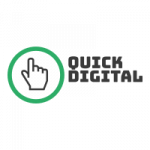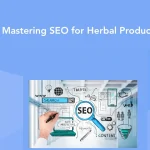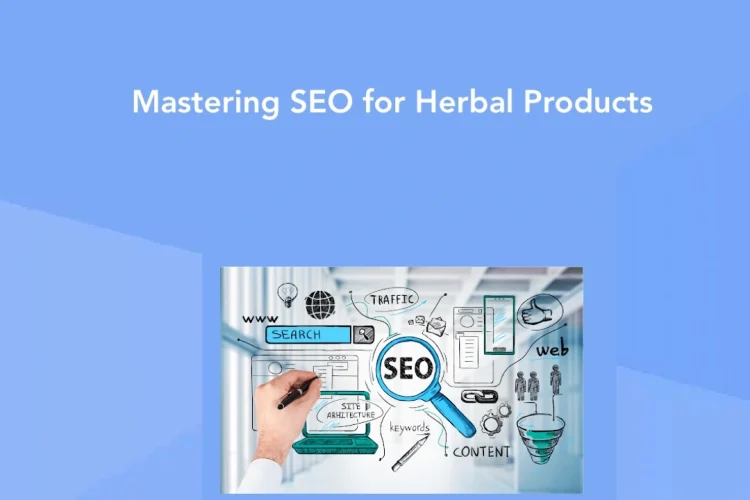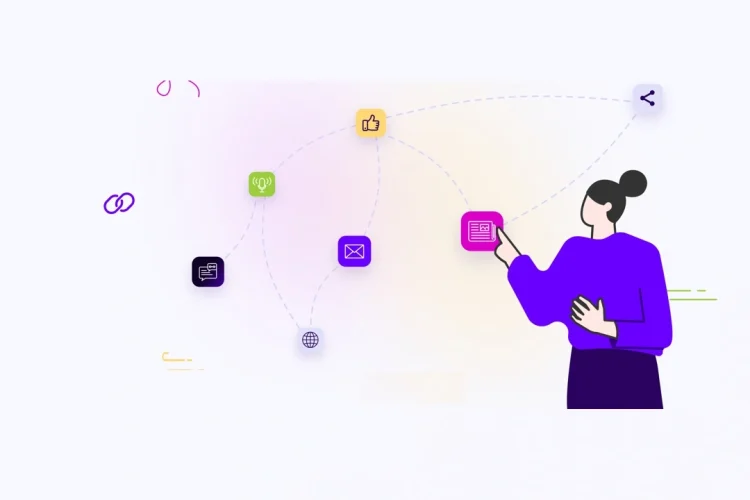
In this new millennium of online marketing, the primary goal of most marketing teams, in a simplified understanding, is to drive more traffic to their websites in the hope of converting them to valuable leads or assets for sales. This method relies on the thinking that more the audience a website reaches, the more sales it can make happen. But this method often proves shortsighted and unreliable in generating value assets from the mass of visitors it receives.
The lesser focused on and the more effective method is to generate more leads out of the existing traffic. This ensures long term business growth and more client customer engagement. This is where conversion rate optimization steps in.
What is Conversion Rate Optimization?
Conversion rate optimization is the process of optimizing your website based on the website visitor behavior in order to make them complete the desired set of actions. It involves understanding the demographic psychology of the target audience, analyzing how the website audience navigates through the site and zeroing in on the barriers that prevent them from completion of the website goal. A good Conversion Optimization process is an ongoing study of user behavior and constant improvisation to provide the best possible user interface and ease of navigation. It is a constant study on the user behavior and presenting them with the content they need in the most simplified way possible.
In the age of fast paced internet buyers, the customers are always looking for better and faster alternatives for their needs. By studying their navigation patterns and history, the website can be personalized for them based on their level of usage and needs. Based on their geography, the device they use, past usage history to make the website more relevant and easier to navigate for them. Using tools such as heat maps, click maps, user session recordings and session replays, we can understand the path users follow to navigate through our site and by dwelling deeper into the data of users who didn’t complete the goal, we can identify the barriers or loopholes in our website that prevent them from conversion.
What is a conversion?
Conversion is a term used to describe a visitor completing the website goal. The required website goal varies according to the type of business it handles. For an e- commerce website, the primary macro conversion goal is to complete a purchase or financial transaction, for a blog it can be signing up for a newsletter or subscribing to a tutorial. Often the macro goals consist of several micro goals, such as a learning website where the final goal is the purchase of a learning product but the initial steps may be signing up for a newsletter or accessing some of the demo classes.
Examples of conversions
a) macro-conversions:
- Purchasing a product from the site
- Requesting a quote
- Subscribing to a service
b) micro-conversions:
- Signing up for email lists
- Creating an account
- Adding a product to the cart
What is a conversion rate?
Conversion rate is defined as the number of visitors to a website that complete a desired goal (a conversion) out of the total number of visitors.
How to Calculate Conversion Rate
Conversion rate is calculated as the percentage of visitors to your website that complete the site goal. Conversion rates are calculated by simply taking the number of conversions (i.e. leads generated) and dividing that by the number of total ad interactions (i.e. or web traffic) that can be tracked to a conversion during the same time period.
Conversion Rate % = Leads Generated ÷ Website Traffic x 100
How Websites Benefit From CRO
Conversion rate optimization is a systematic procedure of enhancing the content and the layout of your website to ensure a much higher conversion rate. A high conversion rate tells that your website is well designed based on fact based evidence, is effectively formatted for user accessibility and has engaging content for the target audience. Conversion rate optimization enhances your website performance, gives more user satisfaction, saves time and opens up previously unknown possibilities for better goal realization. The major areas of focus for CRO is Improving market return of investment and enhancing the User experience
Successful CRO requires every page and element of your website to be streamlined to the goal of conversion, but the 4 hotspots for conversion on your website mainly are:
i. Homepage
When anyone searches for your website on the internet they first arrive at your homepage. Homepages are potential prime candidates for driving conversions, but requires meticulous planning on design, navigation and content to make it happen. Homepages are the conversation starters with the users, you have to grab their attention and engage them to ensure further engagement. First time visitors rarely convert on the homepage, but by using several tools we can
significantly improve the percentage of conversions. Building on your persona, understanding your target audience and serving a single, clear CTA can go a great length in improving conversions. Users are looking for easy navigation and crisp understanding of what you offer and these help in providing that. Using tools such as session recording and feedback forms can give active and passive feedback from the users. Session recordings and click maps provide us understanding on how they navigate through the homepage, how much they scroll down, the links they click on, elements that catch their attention and focusing on these can improve audience engagement, which leads to higher conversions.
ii. Pricing pages
Pricing pages are the deal breakers for conversions. Often users drift away after scrolling through the pricing pages, either put off by the prices or most commonly by the ineffective presentation of the prices. Once a user is hooked on the product, its value and advantages, it’s essential to convince them to commit to our trust. Effective optimization of pricing pages is paramount to make the users take the final step in conversion.
A well optimized pricing page will compel them to buy the product or service even if they perceive the cost to be high. Several techniques are employe for this, from a minimal, to the point designing to offering free trials and annual payment plans. Our goal is not just to make them buy a product but make them come back again and again. The key is to conduct constant analysis of the users, understand their doubts and fears and address them. Social testimonials, badges by trusted payment services help build trust. An effective CRO goes a long way in exponentially increasing the revenue
iii. Blog
Blogs are a means of establishing a constant conversation with the users, by engaging them in thought provoking discussions and prompting them to subscribe to newsletters and subscriptions, a personal bond can be created with the customers. Blogs are useful in providing the audience with a clear cut CTA and keeping them more engaged with the website, enabling to efficiently convert them to long term clients. Effective and constant analysis of blog pages can provide valuable information as to what connects to the audience on a personal level and how to influence their thought process.
iv. Landing pages
Landing pages are like the billboards of online marketing. Optimizing landing pages is a major step in diverting more traffic to your website and effective landing pages can prove to be a good source for conversions and significantly improve the business. Effective landing pages are design with one single goal of maximizing conversions. They are the main destination of paid online marketing campaigns and significant finance and resources are pour in to drive traffic to these pages. The chief aim of effective CRO for landing pages is to optimize for traffic from different sources and to develop an elegant, minimal and efficient User Interface. Efficient UX designs and tools like A/B testing are effective for this.
When is CRO right for your business?
Conversion rate optimization enables you to analyze the why and how of consumer behavior. It boosts your website to attain its maximum potential through rigorous analysis and constant improvisation. The advantages can be broadly classified as:
- Improves user experience
- Lowers your cost per lead
- Increases your business returns ad boost customer lifetime value
- And getting an SEO boost
The prime objective of a well-crafted CRO is to maximize the returns on already existing traffic to your website. Every change made on the website translates to added revenue. Understanding user navigation and easing the path to site goals, fastens the process removes hassles and streamlines the conversion process. Each conversion adds more revenue.
Best practices for Conversion rate optimization (CRO Marketing Strategies)
Some of the conversion rate optimization best practices to test and implement at your company include:
i. Create text-based CTAs within blog posts.
CTA (call to action) is one of the most prominent elements of a webpage that a fresh visitor notices at first glance. It’s imperative to have a crisp, clear CTA presented in an aesthetic and visually attractive manner. Most people tend to just scroll past banner like texts. Simplicity and minimalism catch the eye of the visitor more than anything else. Simple Text based CTA, i.e. a single line of standalone text in a professional font attracts the attention of the user. They are more likely to be engaged and process more information when it is presented in a minimal yet efficient manner. People rarely have the patience to read and process long body texts, so it’s always efficient to present the required information to them right at the beginning as a simple CTA.
ii. Add lead flows on your blog.
Pop ups have earned a bad reputation as being disruptive and annoying to the visitors, that it prevents them from visiting the webpage, making them click away. But, if used efficiently, they can work magic in converting visitors to committed members. The visual representation, the fonts and the placing of lead flows are of paramount importance. Optimized lead flows that are visually engaging, and effectively timed and placed, can be a part of user experience rather than be detractors. They can be optimally used to engage the visitor to interact much further with the website and create a workflow that can be easily navigated and quickly convert them.
iii. Run tests on your landing pages.
A landing page is where a website visitor becomes a lead or an existing lead engages more deeply with the brand. They are the main destination of paid online marketing campaigns and significant finance and resources are poured in to drive traffic to these pages. The chief aim of effective CRO for landing pages is to optimise for traffic from different sources and to develop an elegant, minimal and efficient User Interface. To optimize a landing page running A/B tests to identify your best design is effective.
iv. Help leads to immediately become a marketing-qualified lead.
An MQL or a marketing qualified lead is one that is more likely to become your customers than other leads or prospects. When a customer visits your website for the first time your lead intelligence unit can make out whether he is a marketing qualified lead or not, simply by observing which pieces of content he or she has consumed over a period.
By tracking and thoroughly analyzing their content consumption patterns,
your marketing software can determine if there is a high chance that the visitor may become a customer.
v. Build workflows to enable your team.
Engage your website visitors in real-time to increase conversions by offering support and guidance required. Make sure that the leads get the information they want in real-time by adding chat bots to your high-performing web page
vi. Optimize high-performing blog posts.
Attract traffic to your website by promoting the required posts. This can be done by optimizing the content for the search engine results page (SERP) or making sure it’s update and relevant.
vii. Leverage retargeting to re-engage website visitors
Retargeting is particularly impactful to covert visitors into customers. This works by increasing traffic to your website using online ads and pop ups to potential customers based on tracking.
Contact us to improve your conversion
A well-studied and developed CRO plays a major role in accentuating the other marketing investments. CRO relies on continuous experimentation and analysis of consumer behavior on the website. By tracking the customer activity you can arrive at the best possible formula for conversions. You can track the areas that are most interacted with and enhance these areas and use the data gathered as a benchmark for further evaluation and experimentation. Grow your business and attract new audiences with the best conversion rate optimization strategies.





